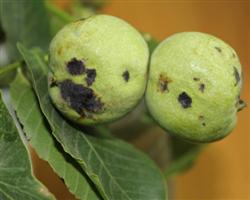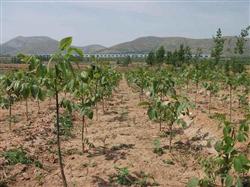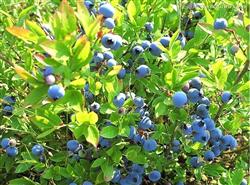What's the secret of walnut diseases and insect pests?

What's the secret of walnut diseases and insect pests? Please advise the following to introduce several kinds of walnut pest control tips for reference: variety selection is the root cause of walnut planting in many places, there is a swarm of bees on the ground, some planting seedlings, some grafting seedlings. There are a lot of problems brought about by the great work. For example, walnut varieties are mixed and bacteria are seriously infected with each other. You must be careful in choosing varieties. First of all, we should select varieties according to local conditions, select varieties suitable for local climate and soil conditions, and select early-bearing and thin-shell varieties with strong growth, strong stress resistance, high quality and high yield. Secondly, the construction of the garden also has to be scientific. When using grafted seedlings to build a garden, it should be noted that walnut is a monoecious plant with wind-pollinated flowers and a long pollination distance. Therefore, in the establishment of the garden, it is necessary to select 2 or 3 main varieties with similar or complementary male and female florescence, or suitable pollination varieties. The suitable ratio of main varieties to pollinated varieties is 6:1. The main varieties can be planted in Xiangling, Qiangtler, Liaohe No. 1, Yuanfeng, Luguo series and so on. The reasons for fruit drop are mostly aimed at the phenomenon of walnut fruit drop. Xu Mingju analyzed that the walnut blossom encountered rain or low temperature, resulting in poor pollination. Young fruits that are not well pollinated usually fall 20 days after anthesis. Walnuts have fallen in many places this year, which is the main reason. Walnuts in some places have no symptoms when they grow to the size of egg yolk, and there is still fruit drop, which has a lot to do with the low temperature during flowering this year. Believe it or not, if you cut open the walnut, you will find that the seed has blackened or shrunk. The degree of fruit drop depends on the variety, and different varieties have different degrees. Like the Qantler variety, the fruit drop is very light. Many fruit growers think that walnuts are not strict with fertilizer and water. This view is wrong. Due to the lack of fertilizer, and walnut consumes more nutrients in the flowering stage, it is easy to form a nutrient deficit, resulting in weak tree potential, which can easily lead to fruit drop. Although some fruit growers attach importance to fertilization, they tend to apply nitrogen fertilizer, and the use of too much nitrogen fertilizer will also make the trees too prosperous, resulting in the loss of balance between vegetative growth and physiological growth of walnut trees, which not only makes the canopy closed, poor ventilation and light, but also causes flowers and fruits to fall. In addition, the disease caused black fruit rot of walnut is also very serious. Xu Mingju said that bacterial black spot and anthracnose are the root causes of black fruit, empty shell, rotten fruit, rotten kernel and fruit drop of walnut, so the prevention and control of these two major diseases is the key to high yield. Prevention and treatment of bacterial black spot, also known as "walnut black", is caused by the fungus Colletotrichum gloeosporioides. It infects plants with an injury rate of 60-80%, fruit damage rate of 20-40%, and more than 65% when serious. The pathogen of black spot can infect all the tissues of leaves, resulting in blackening of the whole fruit, early shedding, dryness of nucleoli and gradual blackening and necrosis of branches. Anthracnose mainly harms fruits, leaves, buds and shoots of walnut. For diseased plants, the general fruit injury rate is 20%, 40%, and more than 90% for seriously ill plants. This leads to black and rotten walnuts and shriveled nucleoli when they are about to ripen. The onset and severity of walnut anthracnose are closely related to high temperature and humidity. Rain Water early and more, high humidity, the onset of early and severe. The plant has small row spacing, poor ventilation and light transmission, and the disease is serious. Due to the large number of Rain Water and the early onset of the disease, it is necessary to do a good job in prevention and treatment. It can also be prevented by spraying copper-containing preparation before and after sprouting and leaf spreading. In the early stage of walnut germination, farmers can spray a 5-degree stone-sulfur mixture on the ground and underground to kill overwintering bacteria and eggs. During the period of walnut leaf development, spraying Bordeaux solution of 1-VL-0.5-15-200 could also prevent bacterial black spot anthracnose. In the early stage of the disease, agricultural streptomycin soluble powder 3000 times liquid plus 70% methyl thiophanate 1000 times liquid, or 20% tebuconazole 3000 times solution plus 2% Ningnanmycin 1000 times solution; enter the rainy season and then use 1 0. 5% Bordeaux solution, alternate use, the control effect is better. In areas with serious insect pests, especially when walnut limb moths seriously occur, farmers should control pests in time and mix them with insecticides such as cypermethrin to reduce wounds and carriers. Click to get more walnut planting techniques click to get more fruit planting techniques
- Prev

What kind of fertilizer should be used to plant walnut seedlings in autumn?
What kind of fertilizer should be used to plant walnut seedlings in autumn? Please introduce that autumn is a favorable period for planting walnut seedlings, and the supply of fertilizer before planting is an indispensable measure in the growth and development of walnut after planting. In particular, organic fertilizer contains more comprehensive nutrition, not only contains the nutrients needed for walnut growth, but also contains more.
- Next

What do you need to pay attention to when cultivating blueberries?
What do you need to pay attention to when cultivating blueberries? Blueberry is a kind of small berry, the fruit is blue, the flesh is delicate, the seed is very small, the edible rate is 100%, and the taste is good. In addition to sugar, acid and Vc, the fruit is rich in VE, VA, VB, SOD, arbutin, protein, anthocyanin, edible fiber and rich in K, Fe,...
Related
- Moge, come on! The staff of the peasant association in the producing area of cantaloupe were frightened when the crowd gathered.
- Causes and Solutions of low Fruit setting rate of Apple
- Symptoms and control measures of passion fruit virus disease
- Fruit growing lesson: how do apple orchards keep high yields?
- Can you build orchards in the mountains? What are the pros and cons?
- How to manage the coloring period of Crisson grape?
- This paper introduces the processing technology of two kinds of fig products.
- How much is a month for retired teachers in rural areas by 2020?
- How can strawberry planting increase sugar content? We should pay attention to management in many aspects.
- What are the cultivation techniques on how to improve the yield of golden fruit?

